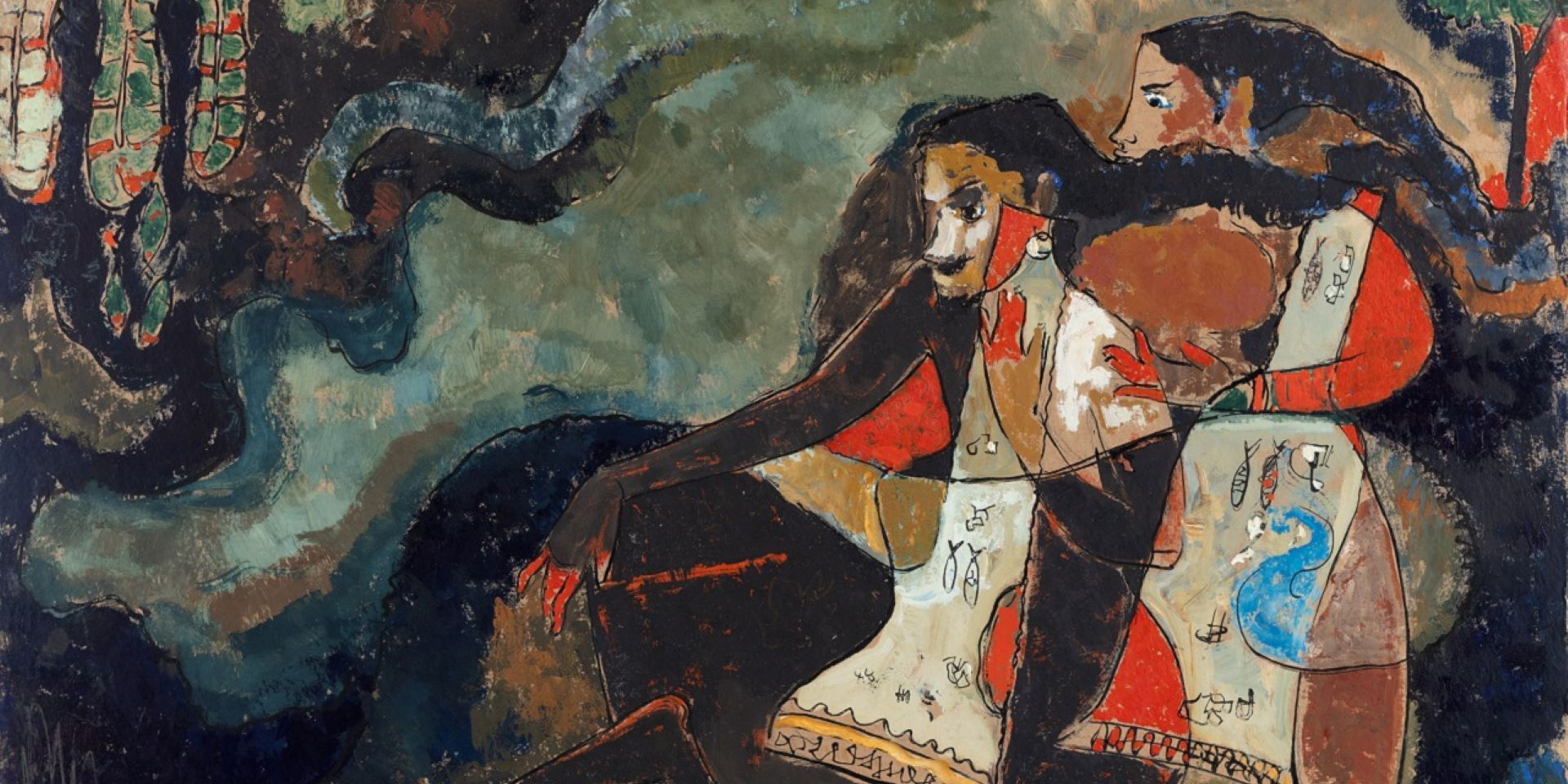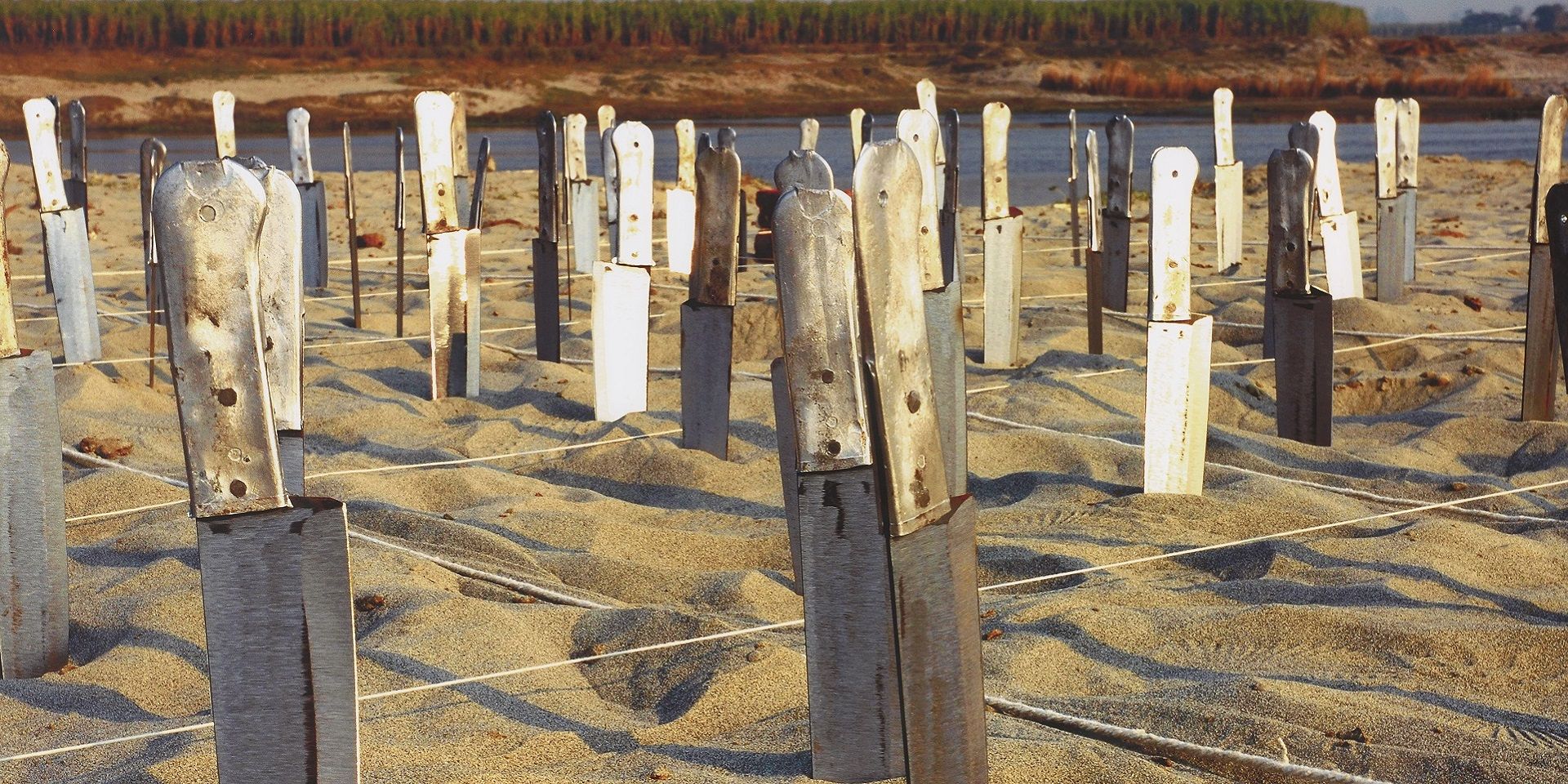Debating secularism in South Asian Art with Tapati Guha-Thakurta
Debating secularism in South Asian Art with Tapati Guha-Thakurta
Debating secularism in South Asian Art with Tapati Guha-Thakurta

Sadequain, Untitled (Bol Ke Lab Azaad Hain Tere) (detail), Oil, marker and charcoal on Rexene, 78.0 x 47.7 in., 1976. Collection: DAG
The intriguing choice of Sadequain’s pen and ink drawing ‘A Headless Figure Paints’ for the symposium poster and the cover of the recently published book How Secular is Art? is rather telling. The steady gaze of the decapitated double heads amidst hands poised in readiness to create, seem to readily usher the reader, confronted with the titular question, into fractured imaginaries of violence, threatened identities and the relentless urge towards meaning-making.
This collection of essays, co-edited by eminent scholars of art history, Tapati Guha-Thakurta and Vazira Zamindar, navigate the fraught religio-political contexts of South Asia to bring into relief the fragility and amorphous nature of a contested term like the ‘secular’. Although Prof. Guha-Thakurta reminds us that the volume is not wholly representative of South Asia, How Secular is Art? On the Politics of Art, History, and Religion in South Asia successfully brings together some of the most articulate and erudite voices in the field to examine India's claim to secularity vis-à-vis other constitutionally non-secular nations like Pakistan and Bangladesh, which also have a long history of secular contestations. Writing about the secular’s shadowy career in the subcontinent, the editors say that
‘The question of ‘how secular is art’ stands inevitably sutured with the question of how secular are the modern nation-states of the subcontinent that emerged as core and breakaway entities across a changing political map, and how secular are their modern professional and institutional structures. The rhetorical question of ‘how’ in the book’s title can be extended, as the essays suggest, to the questions of ‘when’, ‘where’, and ‘to what extent’ can art be a safe habitus of the secular, and the secular ‘function as a guard and guardian of a domain called art’?’ (pp. 9, ‘Introduction’)
The immediacy of the questions raised in the book never ceases to resonate with the present conditions of life in the subcontinent, hurtling from one crisis to another. One of the co-editors of the volume, Prof. Guha-Thakurta, spoke at length to DAG about the relevance, and the limits, of the secular in the world of South Asian art today. What follows is the first part of the rich discussion that took place.
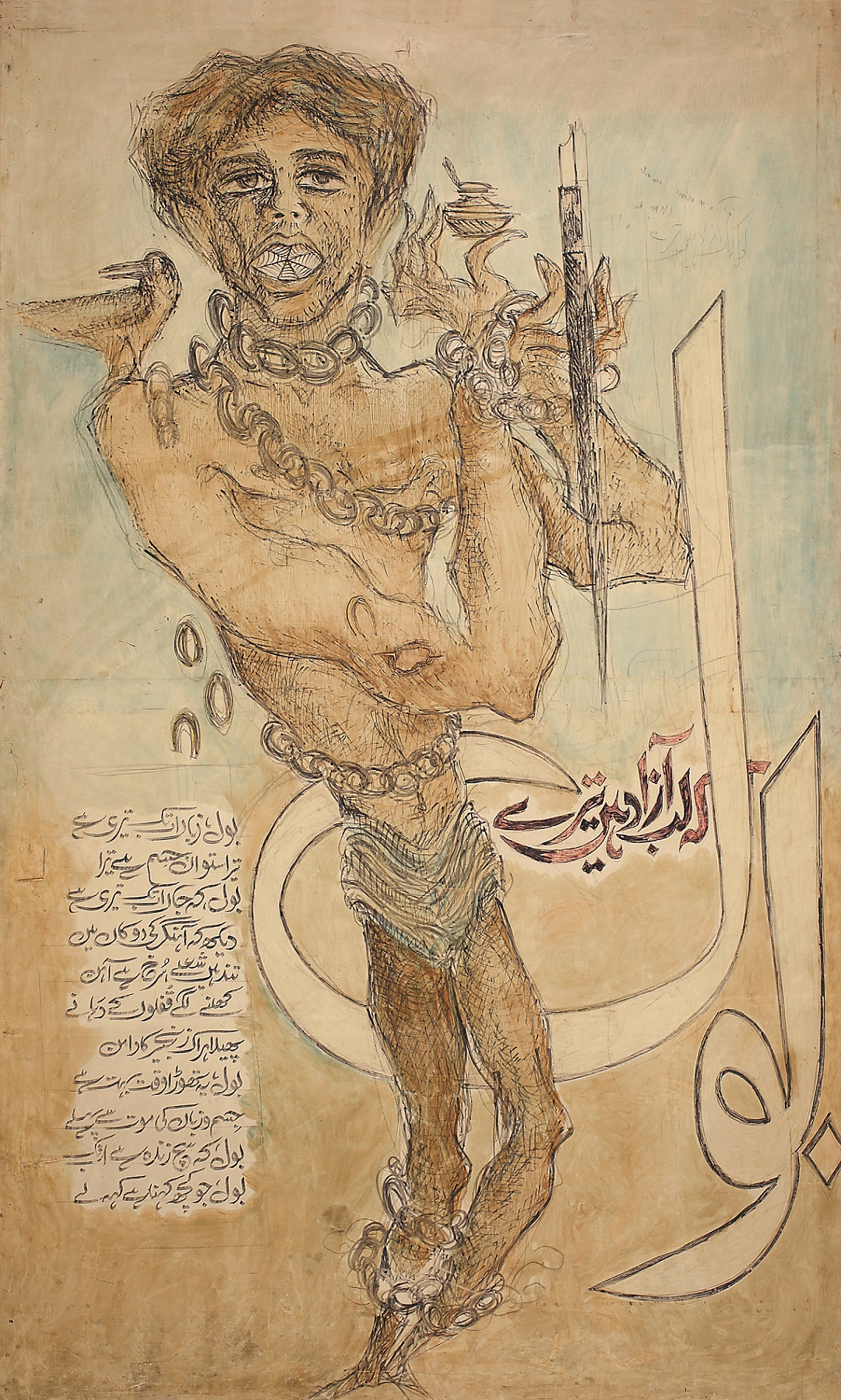
|
Sadequain, Untitled (Bol Ke Lab Azaad Hain Tere), Oil, marker and charcoal on Rexene, 78.0 x 47.7 in., 1976. Collection: DAG |
Q: In the backdrop of the events you describe in the introduction, like the Shaheen Bagh protests, how do we see the role of the artist-as-citizen in South Asian states today? With many artistic voices being predictably suppressed there is also a spate of exhibitions and shows hosted by public art institutions where artists present their works in propagandistic contexts who have forged otherwise secular credentials through their work. Can art historians simply rely on the artist’s critical vision mediating fruitfully between their relationship with art, state and society today?
Tapati Guha-Thakurta: I would begin by saying that the book precedes the huge spurt of protests against the C. A. A. [Citizenship (Amendment) Act, 2019]. The point where we begin the book, which is the site of protests in Shaheen Bagh, was coming to us as the conference which took place in the fall of 2018 [at the Cogut Institute for Humanities at Brown University] was being planned as a book. So, a year later, Vazira and I began to think about how we could continue the rich discussion at the conference, by incorporating the compelling political stakes unfolding around us. In a way, strangely, that extraordinary winter of protest coincided with our reengaging with the theme of the conference and thinking about bringing it into book form.
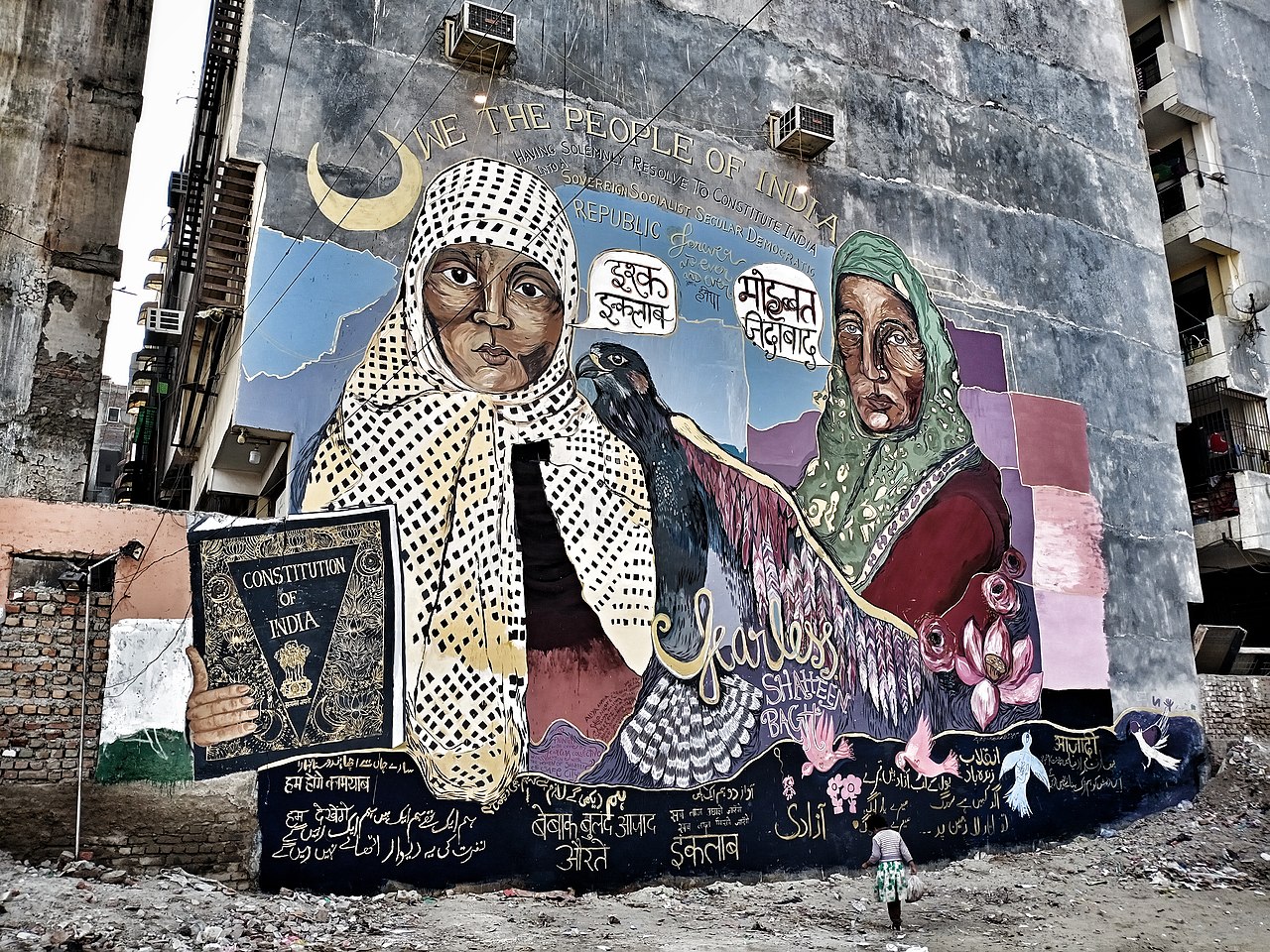
The artist as secular citizen is, of course an older formulation, something that Geeta Kapur talks about in ‘Secular Artist, Citizen Artist’. When she makes the argument about the secular artist, it is from a vantage position of modern contemporary art. One of the positions that we felt we were trying to complicate was the almost given equation between the artist as a modern citizen-subject, and secularism as a larger cultural and political ethos. So it would seem that the worlds of modern and contemporary art were by definition premised on a world, on an institutional and professional world, that was ‘secular’. And that is a problem and a position that the art world has held onto, often when artists have come under severe attack—M. F. Husain being the best case—and where, nonetheless, the art world's defense has floundered and ultimately artists paid the price—Husain could never return [to India]. So, in some ways it is assumed that even if religious themes were to enter [the artwork], the repertoire of modern and contemporary art that the artist and the art world inhabit is a safe, secular habitus, and that secularism could act as a prime guardian of art. These are two concepts that we feel have come under threat repeatedly, with Sadequain in Pakistan, with Husain in India, and with others. The extent of how secure this secular habitus of modern and contemporary art has constantly been thrown into question, particularly with the rise of the Hindu majoritarian government.
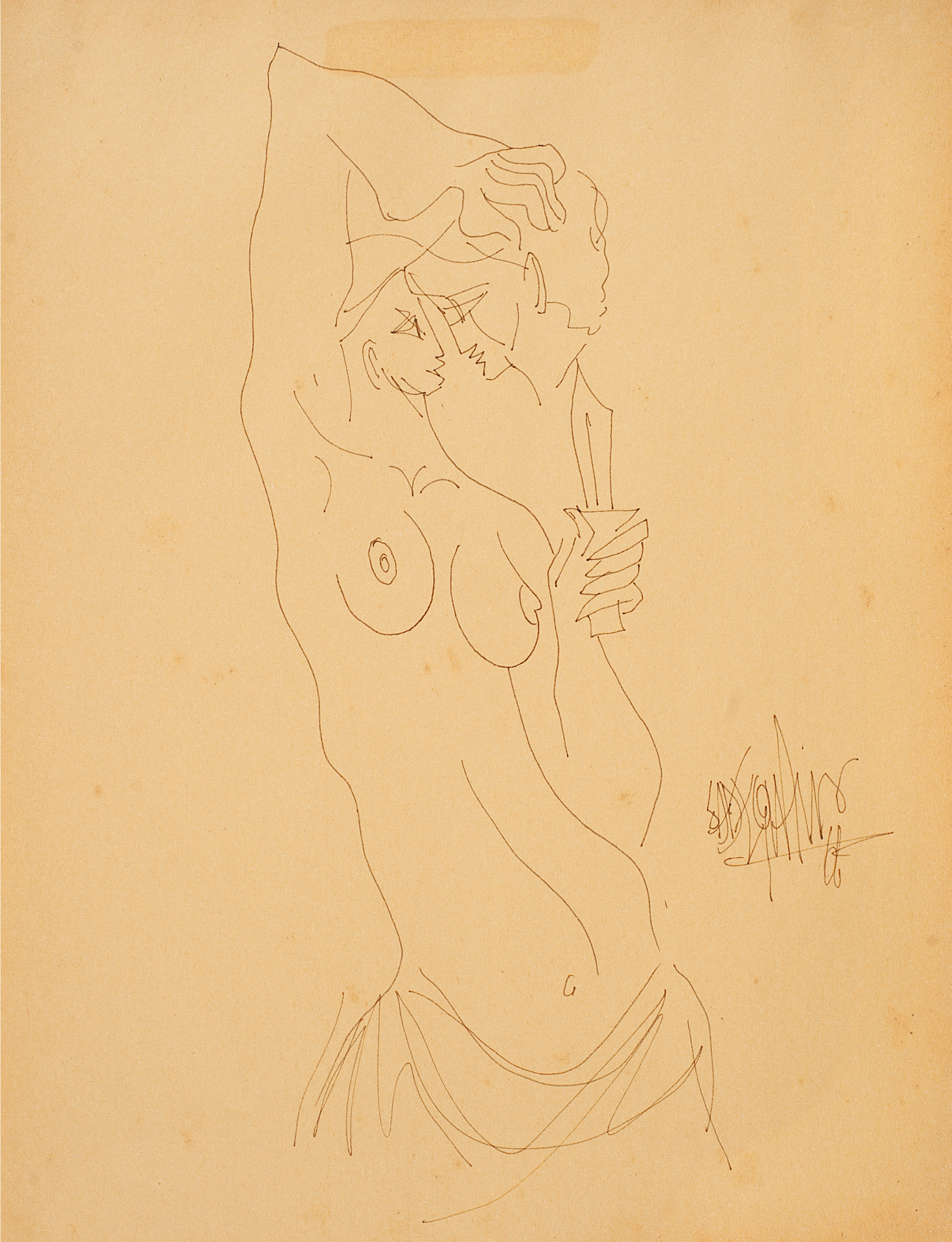
|
Sadequain, Untitled. Collection: DAG |
So that was one premise that we felt needed critical interrogation, rather than to say that it is only a political Hindu right that is complicating the story and that everything else —like the understanding that artists are by definition secular—is pretty straightforward. Why did the art world lose the battle for the same? Why is the art world today so ready to jump into a ‘Mann ki Baat’ exhibition? The question then is not just about state patronage of artists but also about their personal beliefs and the nature of their professional space. That is one aspect that the book addresses, and I feel, therefore, that the space, profession and practice of contemporary art does fill up a large section of the book, certainly in Karin Zitzewitz’s and Zehra Jumabhoy’s essays.
The other problem which the book also addresses is a larger disciplinary question of art history, particularly South Asian art history, where it seems that the work of art—be it the pre-modern period or when the modern period gives way to the contemporary largely in the South Asian context—was once part of a religious dispensation. So, whether in case of sculpture, temple architecture, or even kinds of manuscript painting, religion played a definite role. So, while Mughal art was seen to be secular, or pre-secular, a lot of people still consider the great ages of Indian art to have come out of essentially religious traditions, and that the discipline somewhere understood it through the lens of religiosity. Can you really appreciate a Chola bronze without going into the iconography or the text, or can you appreciate temple sculpture without understanding the iconographic context, and also the context of use? When objects like religious sculpture became central to the discipline of South Asian art history, it had to grapple with religiosity and the need for converting the religious object into an art object.

|
Sambandar, India, Tamil Nadu, Chola period, bronze. Displayed at Linden Museum, Stuttgart, Germany. Image courtesy: Wikimedia Commons |
Q: How would you describe the ways in which the art historical discipline has sought to question the binary between a religious icon/ image and an art object?
Tapati Guha-Thakurta: This is a binary that Western art history from the Renaissance period onwards has striven with in its effort to secularize the object of art, while Indian art objects remained essentially religious. This orientalist concern showed itself in the Festival of India of 1985 when Pramod Chandra [The George P. Bickford Professor of Indian Art, Harvard University] curated a huge exhibition, The Sculpture of India, 3000 B.C.–A.D. 1300 [at the National Gallery of Art, Washington D.C.] looking at the earliest specimens of temple sculpture. One of the review articles said that the organisers have got it all wrong because Indians are not used to seeing these objects in a museum because they are objects of devotion. Pramod Chandra was fighting back saying that he wanted these to be seen as masterpieces of sculpture in the same way that Greek or Italian art, whatever the context of worship, has made that transition to become beautiful works of art. And that to me is an interesting moment—asking just how secularized was the discipline of art history? Is this transition from being a once-religious object into becoming a newly secularized object of art ever complete? Are museums and temples discrete entities? Are spectators always following the script that you read as an art historian?

|
The Didarganj Yakshi, now at the Bihar Museum in Patna, was displayed as ‘Goddess Holding a Fly Whisk’ at the 1985 The Sculpture of India exhibition at the National Gallery of Art, Washington. Image courtesy: Wikimedia Commons. |
Once you begin to complicate this disciplinary divide, and also the divide between the West and South Asia, to say that even Western art history essentially has Christian art at its core, you introduce complexity to a seemingly secularized narrative. I refer to Hans Belting’s fantastic book, Likeness and Presence: A History of the Image before the Era of Art, that talks about an era of ‘art’ which takes off from the late Renaissance period, and before which it was the ‘image’. So the question that we might ask ourselves is when was India’s ‘era of art’? Does India have such a defined historical period when art becomes ‘art’? This was the other aspect of the secular that we wished to engage with. Thus, the book deals with the secular question so far as it relates to the discipline of Indian art history and the ways in which India's painting, sculpture, architecture, even decorative art traditions have continuously had to think about not just the divide between fine arts and decorative arts, but also between the religious and the secular. The transition that we assume has been made from the religious to the secular, remains incomplete. These are the two areas within the discipline and the profession of art that the place of the secular—and the valency of what the term secular means—become relevant. The secular then emerges essentially as a category, like ‘art’ perhaps, from a much later and largely European context, that we are using to project into a series of past products, cultures, contexts, etc. So here are the two major ways in which we wish to complicate the secular directly within the phase of contemporary art practice and within the discipline of South Asian art history.
It also became important to think about the place of the secular in countries which do not have the secular inbuilt into the Constitution, which was the case with Pakistan, and to think in what terms can Bangladeshi secularism be imagined? Now if you assume that the secular is equally under threat across these three countries of the sub-continent and that India today is as much of a politically religious majoritarian group, especially after the passage of the Citizenship (Amendment) Act which challenged the very grounds of the secular, the questions of art practice and art history writing need to be addressed anew.

|
Sunayani Devi, Untitled, watercolour on cardboard. Collection: DAG |
Q. How did you and your co-editor, Vazira Zamindar, frame your approach to these broad questions of the secular—a complex term with its own history of use in the subcontinent—intervening into the sphere of art practice today?
Tapati Guha-Thakurta: So I was thinking of reading out two small sections from the introduction which might be interesting. One is looking at the Shaheen Bagh protest itself where we talk about a mural of a hijab-wearing Muslim woman holding up the Constitution. So, the art was something spontaneous, it was not really about the artist but what became important was that Muslim women, as Muslims and as women, were protesting:
‘In one of the murals of the Shaheen Bagh, the demand is captured by the depiction of the Constitution as a tangible object in the form of a large book that is held up to the people in the hands of the hijab wearing Muslim woman, where she might be expected to carry the Quran. It becomes an article of secular faith. If secularity and faith could be regarded as not as far apart as we presume, then perhaps it is in this mutating domain of critique and conviction that our inquiry can begin on the secular solidarities of art, in situ with the mural at Shaheen Bagh and more broadly, the South Asian image worlds.’ (pp. 4, ‘Introduction’)
So that section is largely written by Vazira and this section is written by me:
‘Tried and tested ad infinitum, ‘the secular’ may seem a rather tired term today. Yet, in its very tiredness, it has left a lengthening shadow that refuses to go away and keeps drawing us into its trail. From a different place of conviction, Talal Asad once noted, it is precisely ‘because the secular is so much a part of our modern life, [that] it is not easy to grasp it directly. I think it is best pursued through its shadows, as it were.’
So I hope that addresses the context of the present as much as the context in which the conference emerged. But I think 2019-20 gave a different twist to the book, and the introduction did emerge in the shadow of this newly re-inscribed landscape of Hindutva that was being physically inscribed through replanted temples, as Kavita Singh’s essay demonstrates. The rebuilding of the temple at the site of the demolished Babri Masjid at Ayodhya has in fact strengthened such a practice and narrative of inscription. So, as we were finishing the essays, the question of finding shivlings inside mosques, like in the case of the Gyanvapi mosque [in Varanasi] and the Shahi Idgah mosque at Mathura, were being discussed and the courts were continuously allowing such investigations to proceed. Thus, it seems that the threatened historical monument, especially the Islamic monument, remains as much vulnerable as the Muslim citizen and the Muslim historical past in India.

|
Abanindranath Tagore, Bharat Mata, Chromolithograph on paper. Collection: DAG |
Q. . Zehra Jumabhoy’s essay, ‘Making Place for People? Geeta Kapur, Secular Nationalism, and ‘Indian’ Art’, argues that in today’s sociopolitical milieu older practices of the Sufi-Bhakti valorisation of national, sacred-secular art is an inadequate critical tool. How do you think art practice can be vigilant in drawing upon the historical past, especially on syncretic modes of thought and existence, without unwittingly succumbing to the trappings of a ‘soft’ religious-nationalist narrative?
Tapati Guha-Thakurta: Let me first pose a simple question, what place does religious devotion or religious iconography have in contemporary art? We know that while artists may well have been divided on the issue, religious iconography continued to play a powerful role in both market-produced varieties of Indian art and even in the modernist and more contemporary Indian art. Iconography is such a rich part of everyday Indian visual worlds, and there are ways in which artists do not reject the religious. But, for a long time there was a reluctance in certain circles to address the integral place of religion, devotion, affect, belief, faith in everyday worlds that both we upper class professionals, and other people at large inhabit. I think that is a huge lacuna in coming to terms with questions like, ‘Can I be religious and still essentially be a secular person? Can the secular be devoid of devotion and affect and can we also think about the limits of the secular?’
This is a question that was waiting to be answered. A lot of the early history of Indian art has instances of the religious freely entering its domain, and Raja Ravi Verma’s works were the ones that crossed the bridge. However, the day his paintings of the Mahabharata and Ramayana, followed by Lakshmi and Saraswati, moved from palace halls to become popular prints, is the day Ravi Verma forfeited his status as an artist, in a way that the Bengal School artists never did. Nandalal Bose painted Kali and Abanindranath painted the Ganesh Janani. The Bengal School’s work was full of religious iconography which was being reclaimed as tradition rather than as religion. We can continue to think about how far religious iconographies have animated modern and contemporary art, and what the right of iconography is to animate the world of art.
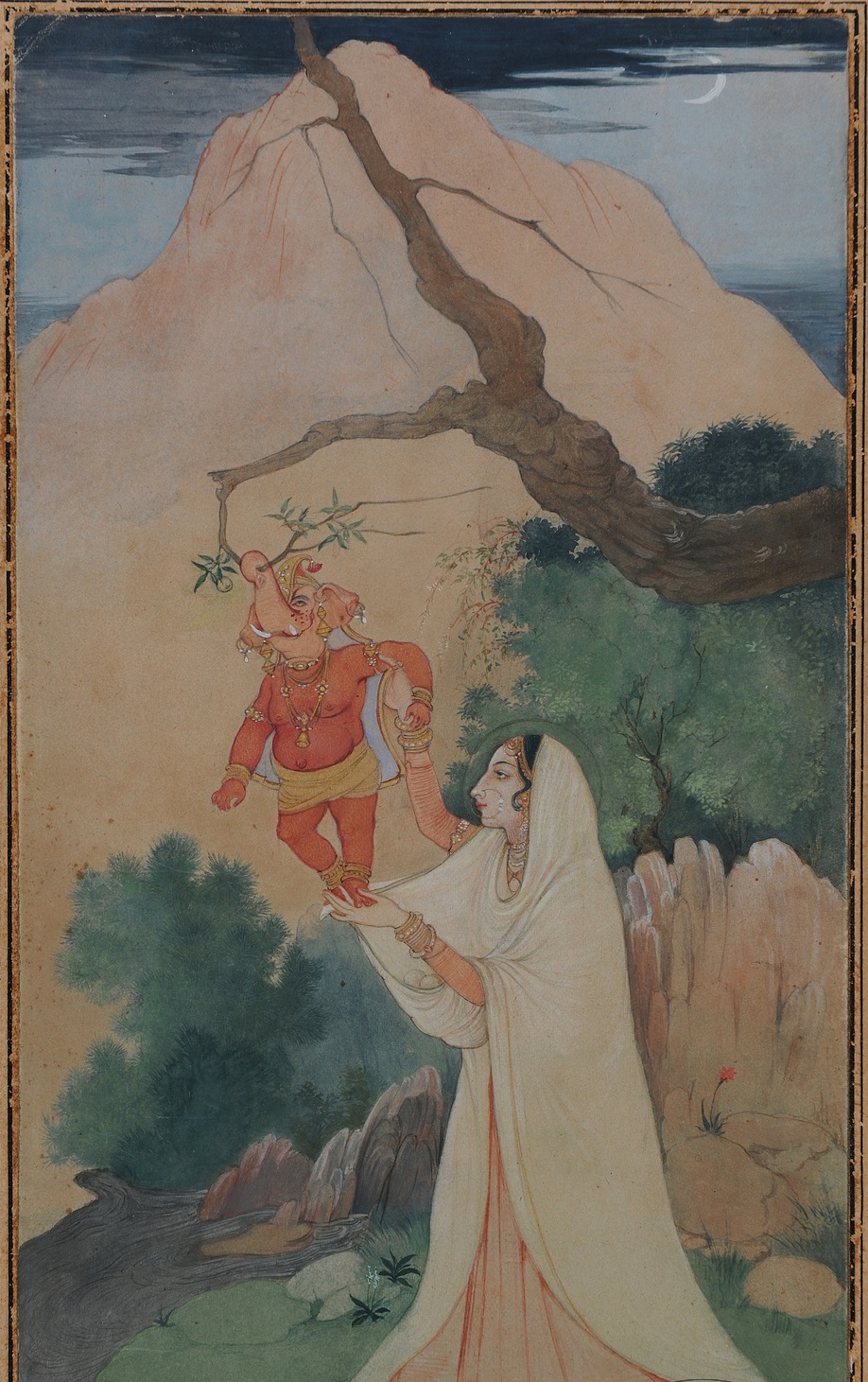
|
Abanindranath Tagore, Ganesh Janani (detail), 13.3 x 8.0 in., 1908. Image courtesy: Indian Museum and Wikimedia Commons |
Much of the debate regarding Husain was hinged on what he had said: if you were to take iconography as a cultural possession which all artists can access, then ‘India’s 5000-year-old culture’ was his inheritance as a Muslim. So, think of the way K. G. Subramanyan takes the image of Durga and uses it as a playful icon, something irreverent, like he does with Hanuman and Shiva. There is so much of that in our popular tradition and that is why it is so interesting that ultimately the gods are not just humanised, but rather they become part of the foibles and vanities of contemporary life. Think of Durga in advertising. In some ways there existed a space where the right to be impertinent, the right to be playful and subversive with your gods could be exercised. To name an artist, a modern artist, as ‘Hindu’ or ‘Muslim’, was itself seen to be an impropriety at that time. Now those are the terms in which Indian religious iconography continues to claim a very powerful space in art.

|
K. G. Subramanyan, In the Calcutta Alleys, Acrylic on glass (reverse painting), 23.5 x 17.5 in., 1989. Collection: DAG |

|
M. V. Dhurandhar, Untitled. Collection: DAG |
Now Zehra [Jumabhoy]’s critique is that there is a sense that for a lot of artists, and she is referring to Nalini Malani’s work in particular, figures like Kabir become very important. They were trying to reclaim a figure which does not belong to the religious orthodoxy, or figures that broke religious boundaries.
Lots of people feel that the best way to address cultural difference is to talk about how the cultures of accommodation (especially of different faiths) affect our understanding, and that in some sense there was a culture of living together which needs to be highlighted.
I think what Zehra is questioning is that this then becomes a somewhat comfortable zone where we move outside the hard boundaries of religious establishments and we think of a place which is not religious, but which is cultural, speaking more broadly, and the art, literature, music, along with figures like Kabir or the Bauls, come to be celebrated by the intellectuals. So, let us think of it both as modernist interventions and as increasingly political ways in which we are trying to address this complexity. But the question is then: what happens when we address orthodoxy in its own terms?
So, I think Zehra, as a working Muslim curator, feels that this zone of a safe habitus has today slipped away. In Karin [Zitzewitz]’s work on Rummana Hussain the artist is seen as intervening as a ‘secular’ figure, rather than as a hijab-wearing Muslim woman. However, I feel that had Rummana been alive today she might have worn the hijab as a mode of solidarity and identity. So, can we now reinsert our position as critic, artist, art historian, within the discipline, within worlds of practice and writing without problematizing it?
Zehra’s critique is aimed at Geeta Kapur, who was in such a canonical position in terms of having defined the avant-garde, the secular, and political, as a mandate. So, she is asking what happens when that mandate has floundered and yet artists are still working, still pushing against various political guards. Consecutively, what becomes of the space of comfort which then begins to unravel? Of course, her aim is not to say that it is time to bring the ulemas back in, but to say that there needs to be an acknowledgement of the limits of ‘Indian’ secularism.
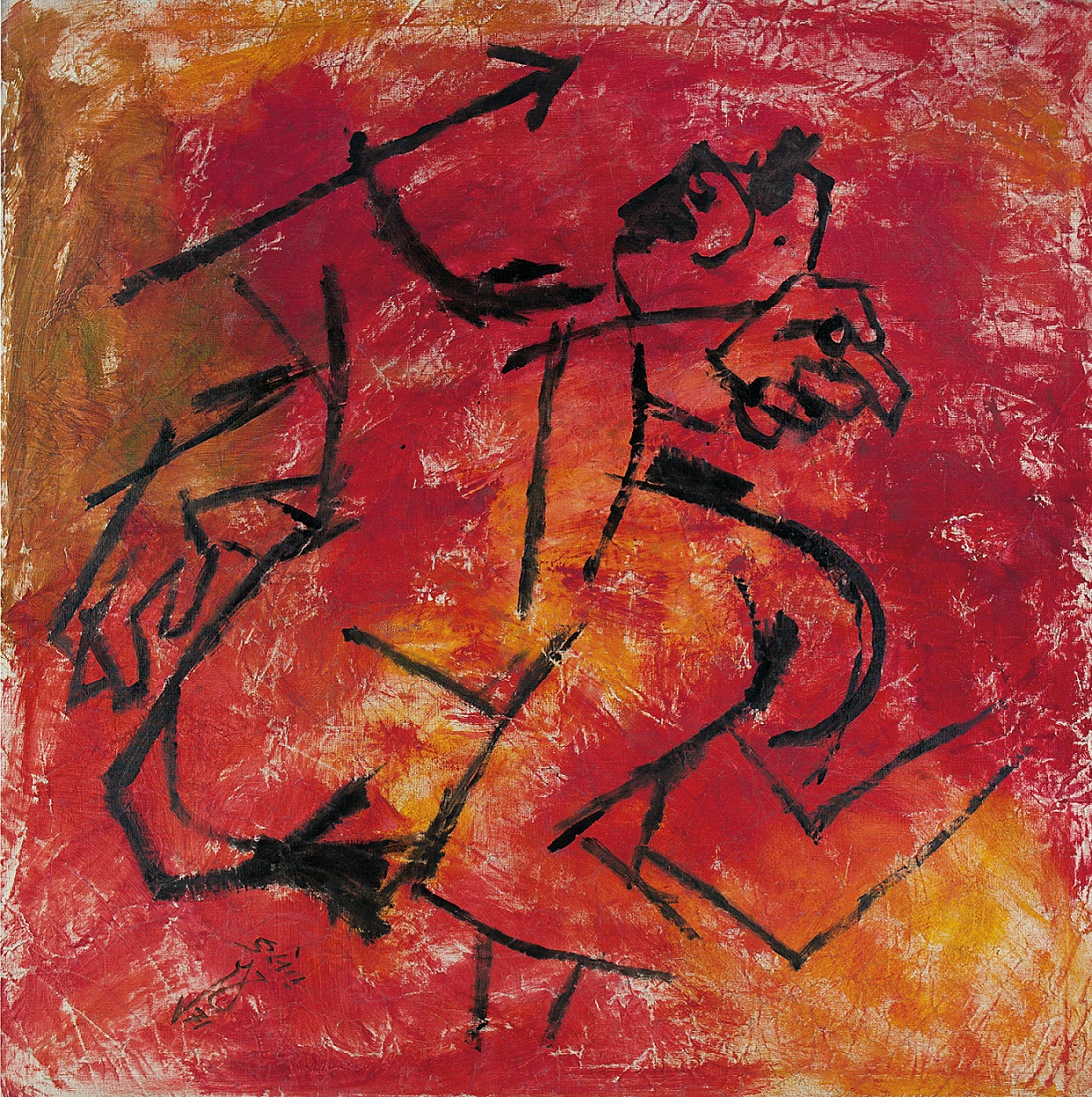
|
M. F. Husain, Yudha, Oil on canvas, 48.0 x 48.0 in., 1971. Collection: DAG |
Similarly, Kajri Jain is taking this divide between art history, religious studies and visual culture—where it is assumed that if something is popular and religious, we are comfortable putting it within the category of ‘visual culture’—and addressing the charge of the religious image. She is saying that as an art historian she wants to employ the tools of the discipline for looking at bazaar prints, which are ephemeral objects of worship. So, she is not just trying to read the kitschy in anthropological terms, but rather examining the disturbance that these images bring within the cloistered walls of art history. She is refusing to cling to these boundaries of religious studies/ art history. Kajri’s larger formulation is to ask what happens when we bring the question of religion, devotion and belief back into art history? And alternately what happens when we bring the question of art, aesthetics, discipline, profession, into works and worlds that we consider have no place for or understanding of religion? So, the questions that we are asking in these essays have a relevance not just for art history in South Asia but for the discipline at large and for the place of the contemporary across the globe, since the contemporary now is inhabited by a global imagination.
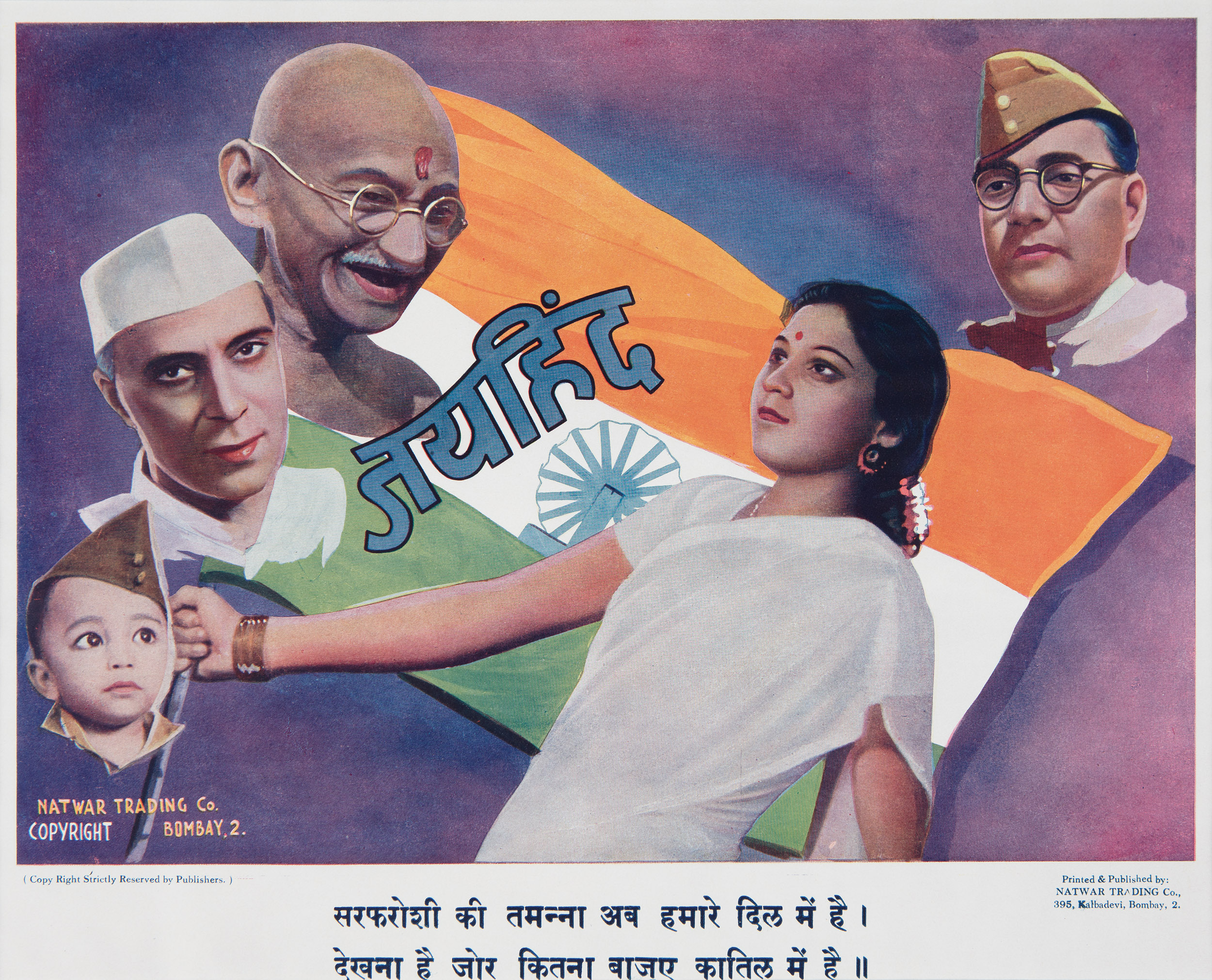
Various litho and oleo, Untitled, offset print on paper. Collection: DAG
related articles

Conversations with friends
The Making of the Dhaka Art Summit: Behind the scenes with the Curator
February 01, 2023
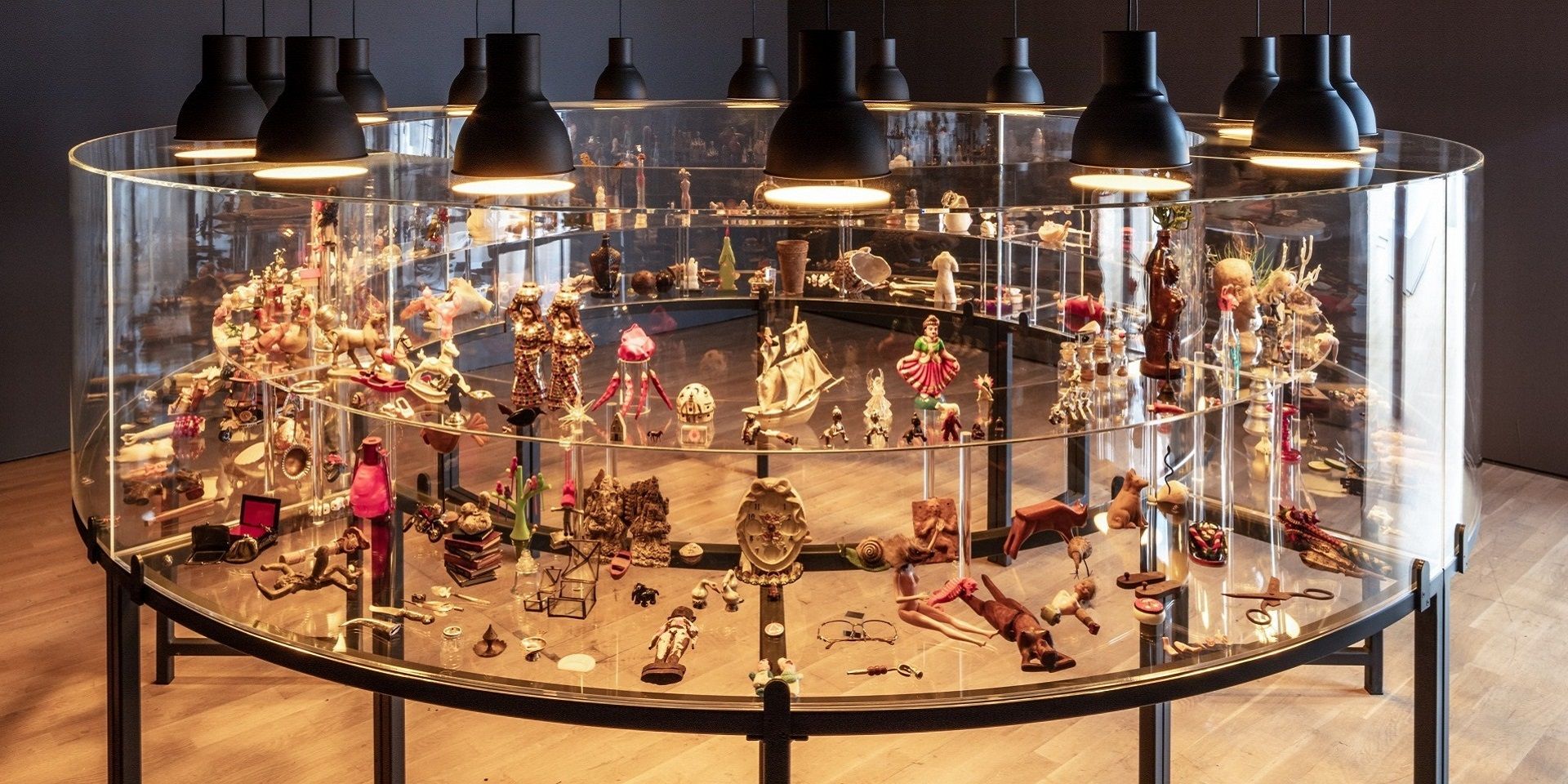
Conversations with Friends
Conscious Collecting with Asia Art Archive and Durjoy Rahman
Editorial Team
March 01, 2023
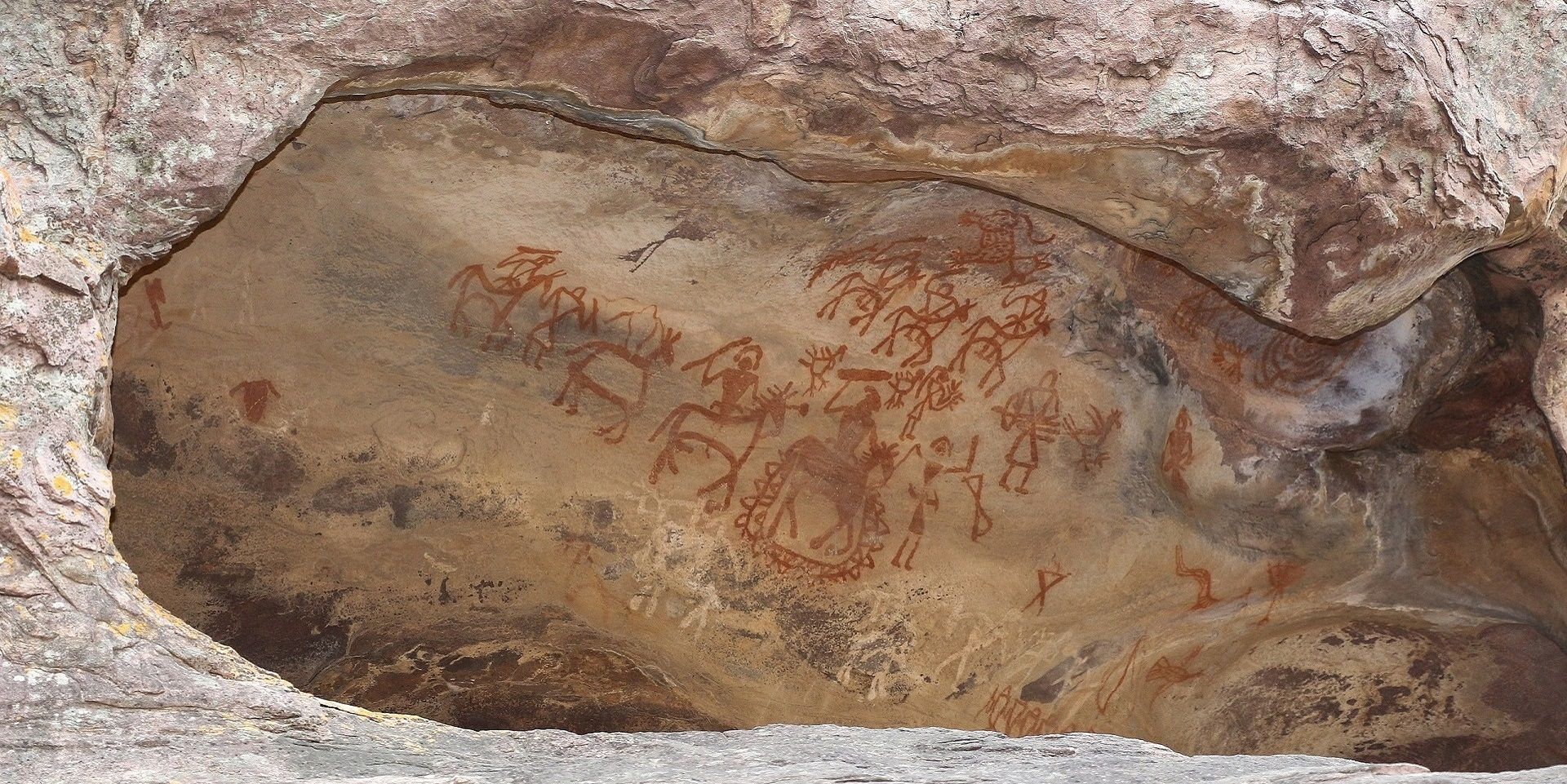
Conversations with Friends
Mysteries of Indian Art: A Conversation with Mamta Nainy
The Editorial Team
May 01, 2023

Conversations with Friends
Debra Diamond on Royal Udaipur painting at the Smithsonian
Ankan Kazi
June 01, 2023




